KHẢO SÁT ĐẶC ĐIỂM ỐNG MŨI KHẨU TRÊN HÌNH ẢNH CBCT NGƯỜI VIỆT
Nội dung chính của bài viết
Tóm tắt
Mục tiêu: Nghiên cứu này nhằm khảo sát đặc điểm hình thái của ống mũi khẩu người Việt trên hình ảnh CBCT. Đối tượng và phương pháp nghiên cứu: Nghiên cứu cắt ngang mô tả trên 145 hình ảnh CBCT hiện đang lưu trữ tại Bộ môn Chẩn đoán hình ảnh Răng Hàm Mặt được được chụp từ các bệnh nhân đến khám và điều trị tại Khoa Răng Hàm Mặt, Đại học Y Dược Thành phố Hồ Chí Minh. Kết quả: Trên mặt phẳng đứng ngang, nghiên cứu ghi nhận ống hình trụ chiếm tỉ lệ cao nhất (38,6%) và ống dạng quả trám chiếm tỉ lệ thấp nhất (6,2%). Trên mặt phẳng đứng ngang, ống đơn chiếm tỷ lệ 57,9%, ống chữ Y chiếm tỷ lệ 40% và chỉ 2,1% trường hợp là ống đôi. 97,2% ống có 1 lỗ cửa và 55,9% ống có 1 lỗ Stenson với hình dạng oval chiếm tỉ lệ nhiều nhất. Chiều dài trung bình ống mũi khẩu là 11,42 ± 2,21 mm, với chiều dài trung bình ống mũi khẩu ở nam là 12,28 ± 2,11 mm lớn hơn ở nữ là 10,78 ± 2,08 mm, sự khác biệt này có ý nghĩa thống kê (p<0,05). Đường kính trước sau trung bình lỗ Stenson là 2,79 ± 0,95mm, đường kính trước sau trung bình lỗ cửa là 4,45 ± 1,07mm. Chiều dày trung bình bản xương ổ phía trước ống tại ba mức: ngang với bờ ngoài lỗ cửa, ngang với bờ trong lỗ cửa, ngang mức giữa ống lần lượt là 7,59 ± 1,25 mm, 7,63 ± 1,26 mm, 7,97 ± 1,46 mm. Trên mặt phẳng đứng dọc, góc trung bình hợp giữa trục dài của ống và sàn mũi là 112,29 ± 6,45o. Kết luận: Nghiên cứu đã chứng minh rằng ống mũi khẩu có nhiều biến đổi phức tạp về mặt giải phẫu, bao gồm cả hình dạng và kích thước. Vì vậy, việc sử dụng hình ảnh ba chiều để xác định chi tiết cấu trúc giải phẫu của ống mũi khẩu là rất cần thiết. Điều này sẽ hỗ trợ hiệu quả trong việc lập kế hoạch điều trị và ngăn ngừa các biến chứng tiềm tàng trong quá trình phẫu thuật.
Chi tiết bài viết
Từ khóa
Ống mũi khẩu, xương hàm trên, CBCT
Tài liệu tham khảo
3. Việc sử dụng hình ảnh ba chiều như CBCT là rất cần thiết để xác định chính xác hình thái và kích thước của ống mũi khẩu. Điều này hỗ trợ trong việc lập kế hoạch điều trị và phẫu thuật, đặc biệt là trong việc xác định cấu trúc xương và tránh các biến chứng như chảy máu hoặc tổn thương thần kinh.
VI. KIẾN NGHỊ
Nghiên cứu này thực hiện trên một cỡ mẫu nhỏ, bước đầu khảo sát đặc điểm của ống mũi khẩu trên hình ảnh CBCT của bệnh nhân đến khám và điều trị tại khoa Răng Hàm Mặt ĐH Y Dược TPHCM và cỡ mẫu này chưa đủ để đại diện cho toàn bộ mẫu người Việt và có sự phân bố không đều giữa hai giới, giữa các nhóm tuối với nhau. Chúng tôi mong muốn sẽ có những nghiên cứu khác với cỡ mẫu lớn hơn, tiến hành khảo sát ống mũi khẩu trên hình ảnh CBCT và trên xương khô để nêu lên được những đặc điểm chung của ống mũi khẩu người Việt.
Thêm vào đó cần có các nghiên cứu trên đối tượng mất một hay hai răng cửa giữa HT để khảo sát được sự liên quan giữa đặc điểm ống mũi khẩu ở trên người còn răng và trên người mất răng.
TÀI LIỆU THAM KHẢO
1. Thakur, A.R., et al., Anatomy and morphology of the nasopalatine canal using cone-beam computed tomography. Imaging Sci Dent, 2013. 43(4): p. 273-81.
2. Hakbilen, S. and G. Magat, Evaluation of anatomical and morphological characteristics of the nasopalatine canal in a Turkish population by cone beam computed tomography. Folia Morphol (Warsz), 2018. 77(3): p. 527-535.
3. Bornstein, M.M., et al., Morphology of the nasopalatine canal and dental implant surgery: a radiographic analysis of 100 consecutive patients using limited cone-beam computed tomography. Clin Oral Implants Res, 2011. 22(3): p. 295-301.
4. Bahsi, I., et al., Anatomical evaluation of nasopalatine canal on cone beam computed tomography images. Folia Morphol (Warsz), 2019. 78(1): p. 153-162.
5. Güncü, G.N., et al., Is there a gender difference in anatomic features of incisive canal and maxillary environmental bone? Clin Oral Implants Res, 2013. 24(9): p. 1023-6.
6. Liang, X., et al., Macro- and micro-anatomical, histological and computed tomography scan characterization of the nasopalatine canal. J Clin Periodontol, 2009. 36(7): p. 598-603.
7. Acar, B. and K. Kamburoglu, Morphological and volumetric evaluation of the nasopalatinal canal in a Turkish population using cone-beam computed tomography. Surg Radiol Anat, 2015. 37(3): p. 259-65.
8. Mardinger, O., et al., Morphologic changes of the nasopalatine canal related to dental implantation: a radiologic study in different degrees of absorbed maxillae. J Periodontol, 2008. 79(9): p. 1659-62.


